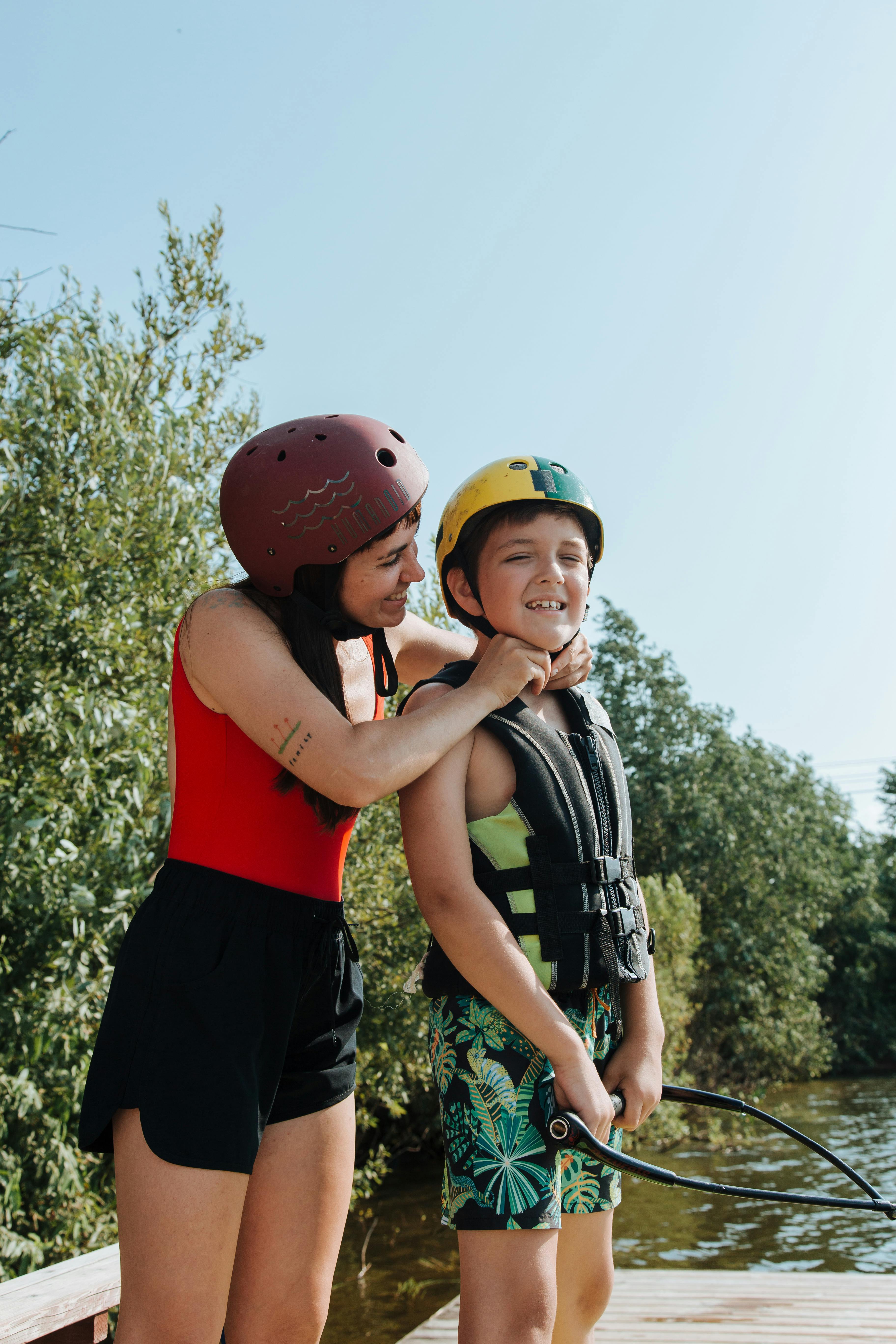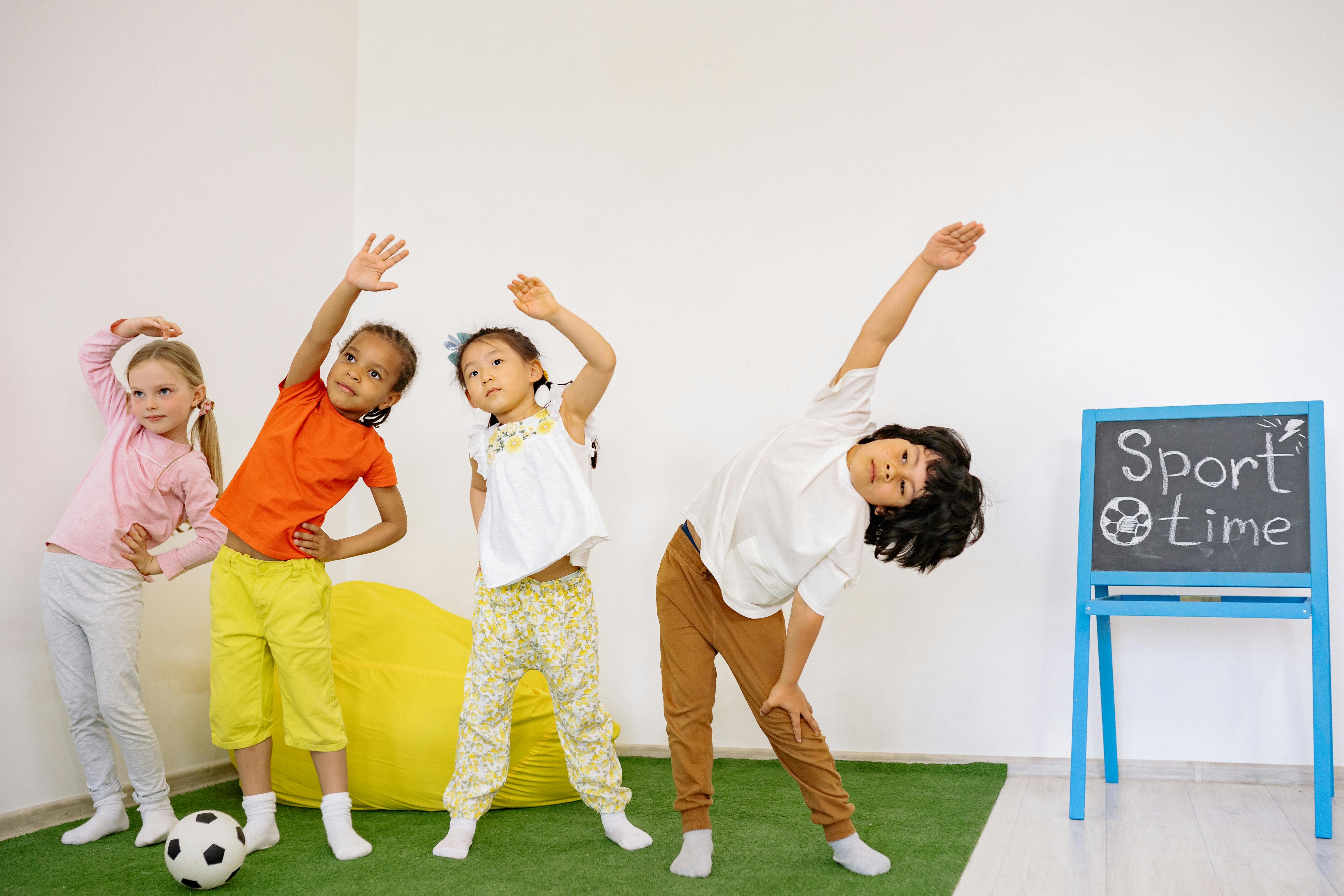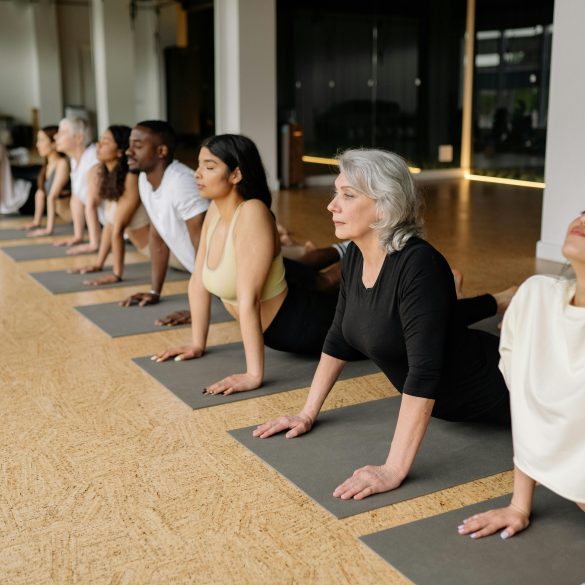Nicaragua Sports Safety: Easy Checklist for Youth & School Teams
There’s a moment I still remember—back when I was coaching a scrappy little volleyball team in Central America, just outside Granada. Dusty court, kids in faded jerseys, and an ambulance on standby, more out of habit than necessity. At the time, I thought, “We’re doing our best. We have a water jug and a first aid kit. What else do you really need?” Now, after working with school teams in Nicaragua for over a decade, I realise good intentions only get you so far. The gap between “trying” and “doing things safely” is bigger than most people expect—especially in settings where resources are unpredictably uneven1.
What truly strikes me is how often the basics get missed, even by people who care deeply. I’m partial to simple checklists with clear wins (and traps to avoid), because—based on years in the field—these tools help prioritise real, achievable action even when circumstances change at the last minute. Nicaragua, with all its beauty and unpredictability, deserves a conversation that is honest, practical, human, and rooted in the local context.
Conclusión rápida: Most sports injuries among youth in Nicaragua stem from easily preventable risks: poor equipment, heat exhaustion, and lack of adult supervision2. With school teams growing every year, this checklist is designed to make safety steps easy to remember and actually doable for everyday coaches and teachers—not just sports medicine professionals.
Why focus on Nicaragua? Because context matters. As of 2025, Nicaragua is home to over 1.5 million school-aged children, with sports increasingly seen as both a public health tool and a community-building mechanism3. The right approach means less risk on the field, fewer scary moments on the sidelines, and ultimately, a happier, more resilient generation.
Tabla de contenido
Understanding Nicaragua’s Sports Landscape
Funny thing is, Nicaragua’s sports culture is more diverse than outsiders expect. While baseball reigns supreme, football (soccer), volleyball, athletics, and boxing have all become staples in primary and secondary schools. According to government statistics, 78% of Nicaraguan schools offer some form of organised sports. That’s a massive number considering just twenty years ago, access was limited primarily to urban centres4.
In rural areas, fields can be basic—sometimes just open land marked with rocks. Urban schools tend to have slightly better infrastructure, but even there, resource allocation is a constant battle. I remember, three years ago, an assistant principal in Leon explained their football team played with only eight proper shoes among twenty players. Coaches improvise a lot—sometimes brilliantly, sometimes with risky shortcuts that raise accident rates.
Here’s what gets me: As sports become more important to identity and well-being in Nicaragua, safeguarding young athletes is both a health and a social justice issue. Recent years have seen a surge in minor injuries, heat-related illness, and a few high-profile cases of concussion—often because safety basics weren’t observed. Nobody wants to admit they missed a step, but if we don’t talk about it, improvement slips away.
¿Sabías? Nicaragua’s Ministry of Education launched a “Safe Sports Initiative” in 2023, aiming to put basic safety training into every school sports program by 2027. The challenge? More than 60% of rural schools have yet to receive training or resources5.
Easy Safety Checklist: Why It Matters for Nicaragua
Here’s the simple truth: Every school and youth team needs quick, memorable checks—no matter how “small” the competition. I’ve seen major injuries prevented just by insisting on a five-minute pre-game safety review. What follows isn’t rocket science, and—honestly—I reckon most coaches have thought about these steps before. The problem is, things get lost in the hustle. The aim here is pure practicality.
- Inspect playing surfaces before each game or practice (look for holes, debris, water hazards).
- Check every player’s shoes and gear; swap damaged or ill-fitting equipment.
- Confirm that drinking water is readily available and that players hydrate before, during, and after activity.
- Review fundamentals of warm-up and cool-down drills—with everyone (not just the “serious” athletes).
- Assign clear adult supervision—not just a “watchful parent” in the stands.
- Keep first aid essentials on hand, with someone trained to use them.
- Plan emergency response: who calls, who treats, how to evacuate if needed.
- Monitor weather conditions for heat, storms, and air quality—adjust practice accordingly.
- Do regular check-ins with players for complaints about pain, dizziness, or discomfort.
On second thought, you’re probably thinking: “That’s common sense.” But—looking back at regional accident data—a huge percentage of injuries stem from skipping one or two of these steps6. The more I teach this stuff, the more I see it’s about remembering what actually works—especially when things get hectic.
Common Risks for Young Athletes in Nicaragua
I’ll be completely honest: When I first arrived in Nicaragua, I underestimated the risks kids faced on the pitch and the court. In my experience, the most frequent causes of youth sports injuries here are not wild, unpredictable events—they’re boring, everyday mistakes. According to the Pan American Health Organization, 65% of reported youth sports injuries in Central America relate to muscle strains, sprains, and heat exhaustion7. Pretty much what you’d expect, right? But here’s what’s surprising: Over half of those cases originated from poor warm-ups and lack of hydration.
Let’s pause and reflect. Is your school’s “safety talk” a real conversation, or just a checklist tick-box before a match? Because—if you ask most kids—they often see safety steps as boring or pointless. The result? Steps skipped, corners cut.
Visión clave: Concussions and head injuries are increasingly common in Nicaraguan school sports, especially football, but are dramatically underreported due to lack of awareness8. Making concussion recognition part of standard safety can prevent long-term complications.
So, what can coaches, teachers, and parents actually do about these risks?
- Educate kids about recognising pain, dizziness, and heat stress—and encourage honest reporting.
- Insist on proper warm-ups and cool-downs every session, no exceptions.
- Rotate players on hot days to avoid exhaustion and dehydration.
- Monitor for signs of concussion (confusion, headache, nausea, sluggishness).
- Log all injuries and near-misses—and review them monthly with staff.
Training & Supervision Essentials
Having worked with a variety of schools—some high-resource, some with almost nothing—I’ve consistently found that strong supervision and basic first aid skills make or break youth sports safety. A well-intentioned coach with zero first aid training is a recipe for trouble. I remember watching a local tournament in Masaya, where a star player collapsed from heatstroke and no one knew how to respond. It was a tough lesson.
Actually, let me clarify: First aid doesn’t have to be advanced. The essentials are more than enough for most situations:
- CPR and basic wound care knowledge among coaches and teachers
- Clear emergency communications (cell phones, backup contacts)
- Documented procedures for calling clinics/hospitals
- A visible emergency plan posted at the sports facility
“One well-trained adult supervisor reduces youth sports injury risk by more than half. Schools don’t need dozens of experts—just one smart leader per team.”
— Dr. Fabio Baeza, paediatric sports health researcher9
But supervision is more than just “being present.” It’s about active prevention, clear responsibility, and ongoing attention. For team sports, rotating supervisors and assigning duty schedules can help avoid burnout—a mistake I made early on when trying to run everything myself.
Equipment & Environmental Safety
I go back and forth on this, but—time and again—the difference in injury rates comes down to gear and environmental awareness. In Nicaragua, a 2022 Ministry of Youth Sports report found that up to 40% of all accidents at school events involved unsafe playing surfaces, broken equipment, or improvised gear10.
Real World Tip: Before every match, walk the field or court and note hazards. Encourage players to point out issues. Empowering kids to “spot danger first” boosts team trust—and often prevents the biggest mistakes.
| Checklist Item | Por qué es importante | Ejemplo local | Common Mistake |
|---|---|---|---|
| Inspect field/court surface | Avoids trips, falls, ankle injuries | Remove loose stones before football practice | Ignoring debris after storm |
| Check gear and shoes | Prevents equipment-related injury | Swap broken bats before baseball game | Tape to “fix” sharp edges |
| Hydration plan | Reduces risk of heatstroke | Assign “water monitor” at practice | Undersupplied water, no backup |
| Supervision roster | Ensures adult response in emergencies | Teacher on duty for morning session | No coverage during breaks |
Moving on, a substantial part of boosting safety is simply empowering students to own their safety concerns. Team culture matters—and if the only emphasis is “winning,” it’s easy for risky shortcuts to creep in. As a coach, I’ve had to dial back that competitive energy to make room for safety conversations. Progress is slow, but worth it.

Nutrition & Hydration Best Practices
Let me think about this: When people talk about sports safety, they almost always start with helmets and knee pads. But in Nicaragua (and most of Latin America), more young athletes miss games due to muscle cramps and heat exhaustion than actual impact injuries11. I used to overlook nutrition and hydration. Now, it’s the first piece I review.
I’ve made a HUGE mistake before: At one school tournament, we provided sugary drinks but ran out of water after just an hour. The result? Three kids down with headaches and two taken to the clinic for dehydration. What really matters is teaching simple, consistent habits:
- Water first, always—sports drinks only after extended activity.
- Bring fruit, not just snacks full of sugar and salt.
- Encourage breakfast before early games; never play on an empty stomach.
- Review symptoms of dehydration (dry mouth, fatigue, headache) with each team before activity.
On second thought, I should add: Nutritional variety can be limited by budgets, but even simple swaps—bananas for chips, natural fruit juices instead of sodas—create noticeable difference. “Best practices” don’t have to be expensive; they just have to become routine.
¿Sabías? Nicaragua experiences extreme temperature swings between February and May. During these months, heat-related injuries spike among youth athletes and school teams. Local coaches recommend adding 2 extra water breaks per hour to practices during this season12.
Boosting Parental Involvement in Sports Safety
The more I consider this, the more I see parent involvement as an underestimated factor. Last month, during a school safety workshop, a mother said, “We keep hearing about safety, but rarely get to see the checklist ourselves.” That’s a recurring theme. When parents are left out, gaps widen.
- Share written safety rules before every season or tournament.
- Invite parents to help supervise practices—rotate duties.
- Create basic first aid information flyers for families.
- Collect medical info (allergies, chronic conditions) for emergency planning.
- Encourage “safety conversations” at home before games.
Mistake I’ve seen too often: Assuming parents have prior safety training. The truth? Most adults, across cultures, haven’t practiced injury response or CPR since high school (if at all). Open lines of communication and easy access to learning materials make a real difference.
Emergency Planning for Nicaraguan Schools
Emergency response is—without question—the piece I worry about most. “We won’t need it,” is the common refrain until something happens. I used to think an informal plan was enough. Actually, that’s a risk I don’t advise anymore.
- Identify emergency contacts and clinic locations antes every season.
- Designate one “lead responder” per team—rotate monthly if needed.
- Keep medical info forms updated and easily accessible.
- Run basic emergency drills (response, evacuation) twice per year.
- Confirm phone access and backup chargers for all supervisors.
Here’s the thing: When an incident happens, clarity is everything. Panic delays help, and without a clear, simple plan, even the best teams scramble.
“In rural Nicaragua, having a written emergency plan and quick access to local clinics has reduced sports-related hospitalisations by nearly 30%. Simple preparation saves lives.”
— María Torres, Director of Rural School Sports Initiative13
Let that sink in. That’s not high-tech; it’s human. I’m partial to dry-run drills and checklists because, in real moments of crisis, nerves kick in and everyone defaults to what they’ve practiced.
Local Insights & Cultural Factors
Ever notice how sports culture shifts throughout Nicaragua? Urban schools value formal rules, while country teams often prioritize improvisation and communal play. There’s a belief among some that “kids are tough—they’ll be fine.” On the surface, that’s a display of resilience. But it can lead to risky behavior and injury underreporting14.
Team discussions often center on success rather than well-being, but changing that narrative helps teams build trust, boost safety, and empower self-reporting. Peers frequently mention that respect for coaches rises when kids feel cared for—not just pushed to win. The more I frame safety as both care and competitiveness, the more buy-in I see. Positive culture is its own safety net.
Local Wisdom: If you want teams to embrace safety, make it part of everyday language—not just paperwork. Celebrate “good safety habits” as you would athletic victories.
At this point, let’s step back and ask—what connects all of this? It’s community. Safety isn’t just a checklist; it’s a culture that grows with shared responsibility, honest conversation, and local adaptation.
Next Steps: Bringing the Checklist to Life
Okay, let’s step back for a moment. We’ve talked about the checklist, the risks, the local landscape. But what actually moves the needle? For schools and youth teams in Nicaragua, the greatest breakthroughs come not from expensive programs but from total commitment to small, repeatable habits. This is where most teams—schools especially—get stuck: lots of good intentions, but not enough action.
The more I reflect on the past decade, the clearer it becomes that nearly every “avoidable” sports injury came down to skipping basics. Not out of laziness, but because routines weren’t deep enough in the culture. Actually, thinking about it differently, even the best checklists need periodic updates. Adaptation and shared ownership are everything.
- Revisit your safety checklist every month—improve and adapt
- Invite feedback from students, parents, and coaches at least once per season
- Share real success stories and “near misses” for ongoing learning
- Make safety a visible part of team culture—post checklists, celebrate improvement
- Update contacts and emergency plans whenever staff roles change
Let that sink in. It’s never just about ticking off steps. It’s about actively building a routine, improving over time, and making safety visible—even when resources are tight and the lineup is always changing.
Llamada a la acción profesional: Don’t wait for an accident to become your “wake-up call.” Schedule your first sports safety review this month, invite someone with first aid knowledge, and share your findings with the broader school or community. One simple action starts the culture shift.
Looking Ahead: Future-Proofing Youth Sports Safety in Nicaragua
What excites me most right now is the momentum. Five years ago, these conversations were rare in Nicaraguan schools. Now, they’re building. The Safe Sports Initiative is expanding. New clinics are opening closer to rural venues. Local tournaments have begun requiring basic safety plans for registration. That’s progress.
However—speaking honestly—the real challenge is keeping these improvements alive. Policy changes fade if not regularly reinforced. Coaching staff rotate. Funding disappears. My advice? Build safety habits that survive the turnover:
- Document your safety protocols to survive staff changes.
- Empower youth leaders or senior students to manage “safety checks.”
- Connect with local health clinics and NGOs for ongoing training.
Did you know adolescent girls in Nicaragua are statistically more likely to suffer sports-related heat illness than boys? A targeted push for gender-inclusive safety training was started last year—a promising sign15.
One last thought: sports safety isn’t just about preventing injuries, it’s about creating a lifelong love of physical activity. When kids feel safer, they feel included. The more we celebrate safety as a community value, the stronger youth sports (and youth themselves) become.
Let’s Build This Together
Safety in Nicaraguan school sports is a community project. Teachers, coaches, families, and students: everyone plays a role. Start small, improve steadily, and never underestimate the power of one safe, happy game. That’s how change really happens.
Referencias
Fuentes y lecturas adicionales



